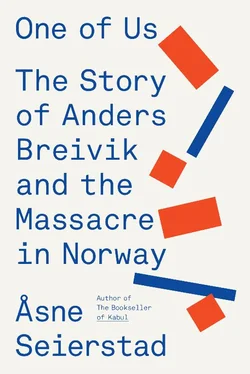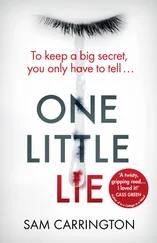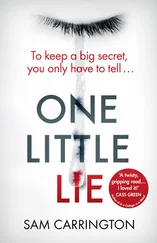The other point at which he appears to be making things up is in his account of the Knights Templar organisation. The Norwegian police never found anything to verify his claims that the organisation existed or that he was a commander or leader of it. Nor could the prosecution discover that the organisation had any basis in fact.
These were the two subjects on which he declined to elaborate in court: his childhood and adolescence, and the Knights Templar. He said that the former was irrelevant and that his refusal to talk about the latter was to ‘protect the identities of others in the network’.
The question of the Knights Templar was central to the discussion of whether Anders Behring Breivik was of sound mind. If the network did not exist, was it a delusion or a lie? The court’s verdict affirmed the latter.
Regarding the day on Utøya, the terrorist explained in detail and on several different occasions what he did, the order in which he did it, and what he was thinking as he did it. He discussed this the same evening, on the island, and the next morning at the police station, and on a later site visit to the island, and to the psychiatrists and the court. He spoke in an easy, unforced way; he elaborated, made associations, thought over what he was not sure about and revised his account accordingly, and admitted that there were some things he could not remember. It did not appear to be difficult for him to repeat things, to respond to the same questions over and over again, as it can be when one has constructed a story. The police made a thorough check of his log claims and timings. Thus far they have found nothing in his Utøya account that does not tally with the statements of the young people who were there – in terms of the conversations he had, the words he shouted, or the concrete situations in which killings took place. The police have stated that in regard to his preparations and his implementation of his attack, they have not uncovered a single direct lie or misinformation.
However, there is some disagreement about when Breivik began the planning for his attack. The perpetrator claims it was back in 2002. Neither the police nor the prosecution think he started that early. My job is not to speculate, but to look for information. What we know from the police logs is exactly how long he spent on every website, and when. We know that he played hardcore computer games after moving back in with his mother in 2006 (for example, he played for seventeen hours one New Year’s Eve). He gradually turned from the games to anti-jihadist and right-wing extremist websites. In the chapter ‘Choose Yourself a World’ I restricted myself to well-founded facts about how the game he was playing was constructed, and external elements such as what his room looked like and the fact that he tapped away at the computer keyboard. I went so far as to conclude that it was ‘a good place to be’, that ‘the game drew him in and calmed him down’ and that he lost interest in real life. I based the first of these statements on what he said, the second on comments from his friends and mother. I also based what I wrote on information from his fellow players, those who knew him as Andersnordic .
The police data provides an indication of what he was doing online at any particular time. It also indicates that the planning of the terror act came much later than he says, maybe as late as the winter of 2010, when he received the last rejection from the Progress Party and no response from his online anti-jihadist heroes. What we know is that he only started buying weapons and bullets in the spring of 2010. Later that year, he began to purchase ingredients for the bomb.
In researching his life, my first priority was to find the pieces and fit them together into the jigsaw puzzle of Anders Behring Breivik. There are still many pieces missing.
* * *
In August 2012, Norway’s 22 July Commission presented its report. I relied on its account of the course of events during the terrorist attack. I used the commission’s report to confirm the timing of events on that day. I also quoted from it for the telephone tip-off from Andreas Olsen and the conversations between Kripos and the operation manager on the question of issuing a nationwide alert, as well as Breivik’s own calls from Utøya. In the report, these phone conversations are written down word for word.
I also referred to the report for the dates of Breivik’s purchases of weapons, clothing, chemicals and fertiliser.
In mapping the course of events on 22 July I was helped by Kjetil Stormark’s book Da terroren rammet Norge (When Terror Struck Norway). I also quoted private emails sent by Breivik that were included in Stormark’s Massemorderens private e-poster (The Mass Murderer’s Private Emails). Stormark also offered important advice during the writing process.
The scenes in which the lawyer Geir Lippestad is called by the police on 23 July and in which he meets Breivik on 23 December 2011 are taken from Lippestad’s own book Det vi kan stå for (What We Can Stand By). The induction rituals of the order of Freemasons are taken from Frimurernes hemmeligheter (The Secrets of the Freemasons) by Roger Karsten Aase. The quotations from Carl I. Hagen are from Elisabeth Skarsbø Moen’s Profet i eget land – historien om Carl I. Hagen (Prophet in His Own Country – the Story of Carl I. Hagen). The story of Monica Bøsei and Utøya is taken from Utøya – en biografi (Utøya: A Biography), written by Jo Stein Moen and Trond Giske.
Other books and magazines which provided useful background information but were not sources of direct quotes are listed in the bibliography at the back of this book.
The terrorist attack received wide and comprehensive coverage in the Norwegian press. Many of these articles proved valuable for my work. I also continually cross-checked with the trial reports of VG ( Verdens Gang ), NRK (the Norwegian Broadcasting Corporation) and the national news agency NTB. Details of the visit from Natascha were borrowed from Dagbladet , while particulars of Breivik’s complaint to the Directorate of Correctional Service came from VG .
The log from which I quote in the chapters ‘Poison’ and ‘The Chemist’s Log’ is taken from Breivik’s manifesto. The dates have been correlated with the results of police investigations and appear to tally. The description of the bomb-making process has been studied by the police, who found it probable that he followed the procedure in his account.
The descriptions of the flat at 18 Hoffsveien were compiled on the basis of pictures and a visit to the premises in the summer of 2013. Descriptions of the areas behind the courtroom for the parties involved in the trial were made possible by a visit in October 2013.
The interviews with then Prime Minister Jens Stoltenberg were conducted on three occasions, the first straight after the terrorist attacks, in connection with the piece for Newsweek , the last the day after the second anniversary of the attacks, in July 2013.
Gro Harlem Brundtland gave an interview about her time as Prime Minister and the events of 22 July in February 2013.
* * *
This book has taken shape in close collaboration with my editors Cathrine Sandnes and Tuva Ørbeck Sørheim. Many thanks for all the suggestions, discussions and corrections. I could never have done it alone.
I have been ably assisted on the research side by Tore Marius Løiten, and as with all my previous books I want to thank my parents, Frøydis Guldahl and Dag Seierstad, who both know the rules for correct comma use and are my most critical readers.
* * *
One of Us is a book about belonging, a book about community. The three friends from Troms all belonged in definite places, geographically, politically and with their families. Bano belonged in both Kurdistan and Norway. Her greatest aspiration was to become ‘one of us’. There were no short cuts.
Читать дальше












